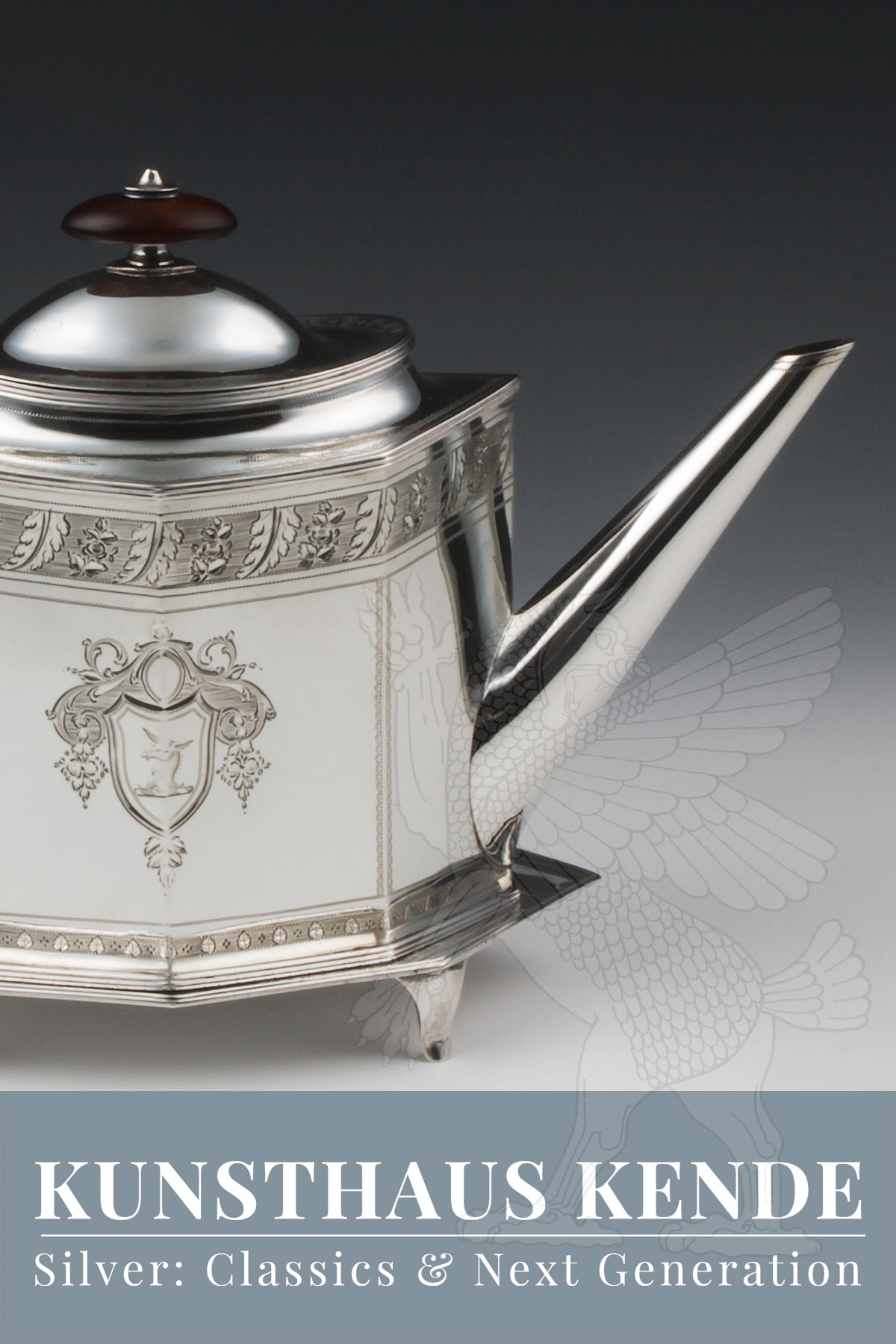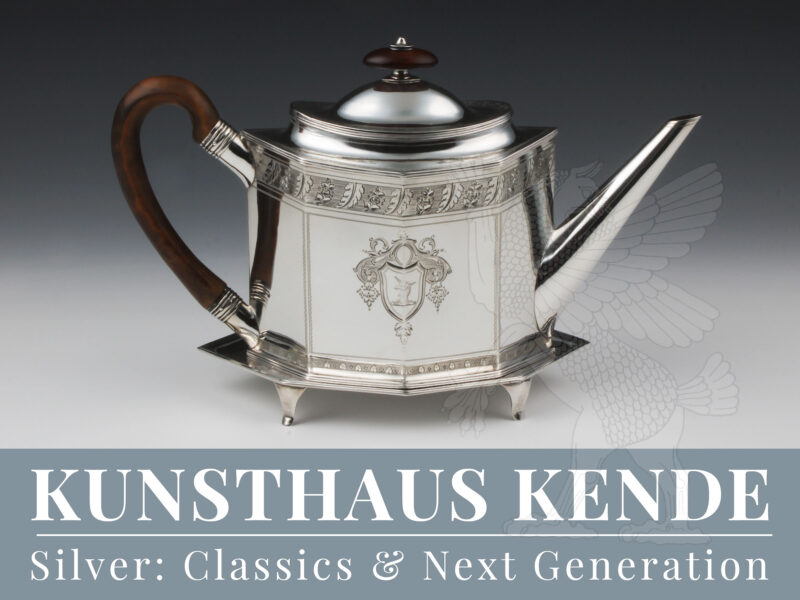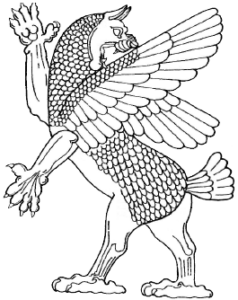Item number: 59082
A rare George III sterling silver teapot on stand,
London 1795 by John Robins
The hexagonal, plain body standing on a flat base and merging into a subtly curved, smooth shoulder. The domed lid with an oval knob. The body decorated by finely engraved classicistic engraving. The central cartouche showing a family crest in the shape of a unicorn to the front, the reverse side engraved “C”. The tubular spout tapering to the tip and adorned with a subtly engraved dotted frieze at the tip. Original handle to the back.
The teapot stand showing four feet and an engraved decoration analogous to the teapot.
An outstanding Georgian sterling silver teapot of the late 18th century with its original stand whose graceful elegance is achieved by the curved top of the teapot. In its hexagonal design this teapot represents a very rare type, the overall condition is outstandingly good for its age: the engraved decoration is nowhere rubbed except for the edges at the central ridges of the body. Furthermore, there are no solder repairs to note and the hinge is in excellent condition both inside and out. Not even creases as they can be caused by overstretching are present on the lid. Naturally, hinges are subject to wear and tear from use, and repairs are almost always present on teapots of this age – not on this one. The spout is also in pristine condition. Stands for teapots were almost exclusively in fashion between the last third of the 18th century and the beginning of the 19th century, which is why they were usually melted down later or got lost. The fact that the original teapot stand is still present here is another special feature of the object. The fine bottom profiling of the teapot also not rubbed off. The lid knob professionally reconstructed.
Due to its overall condition as well as the rare design one of the best English teapots of the 18th century that we could offer for a long time.
Teapot:
28.7 cm / 11.29″ length, 10.5 cm / 4.13″ width, 16.1 cm / 6.33″ tall (to the knob); 509.2 g / 16.37 oz
Teapot stand:
19.7 cm / 7.75″ length, 14.2 cm / 5.59″ width; 162.9 g / 5.23 oz
The London based silversmith John Robins apprenticed by Richard Wade and then with David Whyte. He becomes a master in 1771 and dies in 1831.





